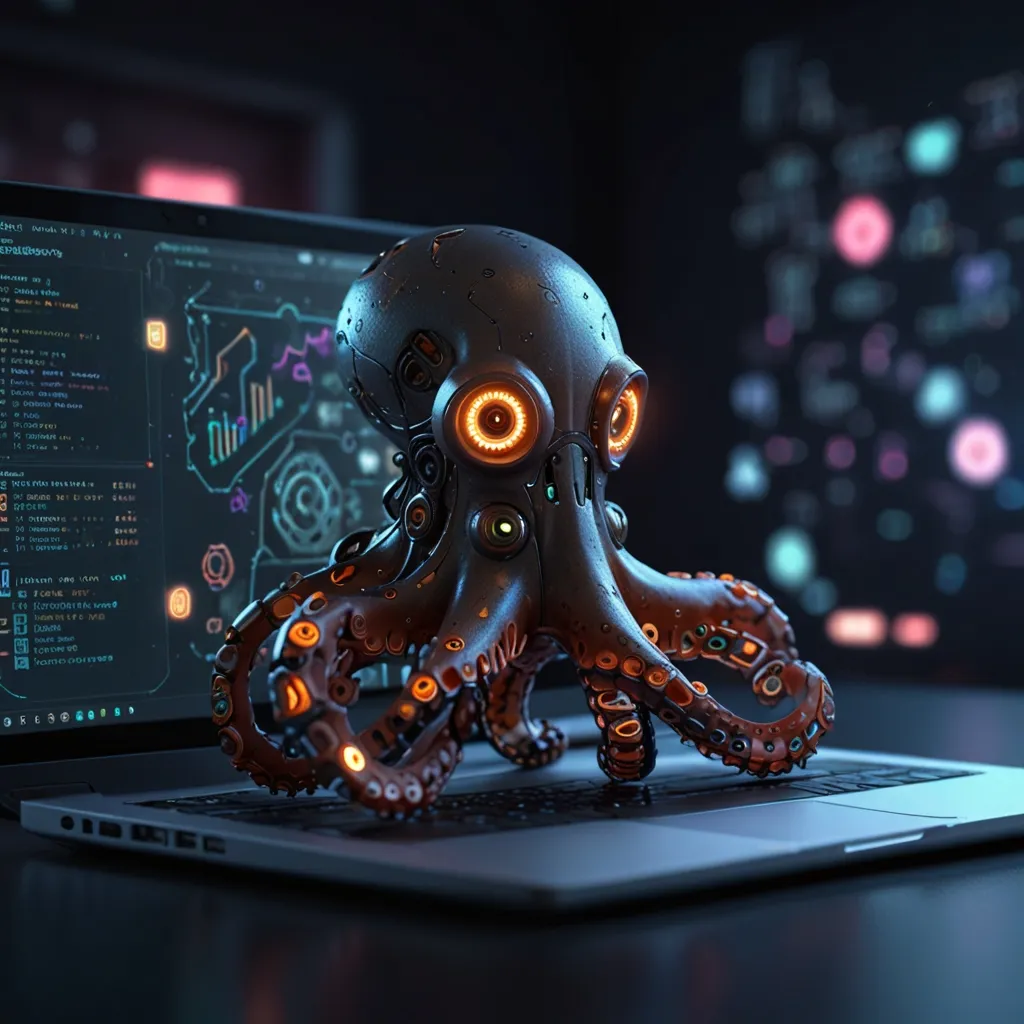Unleashing the Power of JavaServer Faces for Web Development
Alright, buckle up because we’re diving into the world of JavaServer Faces, or JSF for short. This Java framework is like a secret weapon for crafting slick, interactive web interfaces, especially for big-time enterprise applications. Let’s break it down in the chillest way possible and see why JSF is a go-to choice for many developers.
JSF paints a picture of simplicity for web developers, particularly with its component-based structure. Think of it as a toolkit full of reusable parts—text fields, buttons, you name it—that you can use across your application. It streamlines your workflow by reducing repetition and making maintenance a breeze. And with its template system, JSF allows you to build templates in XML, ensuring efficiency and reuse. It’s kinda like upgrading from a single-use tool to a Swiss Army knife.
JSF: Why It’s a Big Deal
JSF’s real magic lies in its model-view-controller (MVC) architecture. This design pattern separates the internal representations of information from the ways that information is presented to and accepted by the user. By handling much of the background complexity, JSF frees you up to focus on what really matters—the logic of your application.
Now, who wouldn’t want a system that handles the nitty-gritty for you? That’s where JSF shines. Compared to JavaServer Pages (JSP), which often require you to manage servlets manually, JSF abstracts this nuisance. With JSF, your development time isn’t bogged down by server management tasks. Instead, you get to channel your energy into crafting sleek, functional interfaces.
Cool Features of JSF
If you’re all about reducing manual labor, you’re going to love JSF’s component-based architecture. Picture an endless Lego set where each UI element can be reused in multiple places. It’s a recipe for consistency and efficiency, saving time and making your application easier to expand as you go.
Event handling is another area where JSF crushes it. It allows you to respond to user actions like button clicks or page loads through managed beans. Think of these beans as your backstage crew, handling all of the interactions and ensuring everything runs smoothly without any hitches. This event-driven model simplifies coding complex user interactions, making your application more responsive and user-friendly.
And if you’re a fan of customization, JSF has got you covered. You can create custom components with complex behavior and even design your own libraries and tags. This is a game-changer because it promotes a high level of code reuse. Imagine cooking a gourmet meal but having pre-prepared ingredients at your disposal—that’s what using custom components in JSF feels like.
Mixing It Up with Other Technologies
JSF isn’t a solo player; it integrates seamlessly with other Java EE technologies like EJB, JPA, and CDI. This blend gives you a robust environment for building enterprise-level applications. Imagine if your favorite bands teamed up for a mega-concert—that’s essentially what JSF feels like when paired with these technologies. For instance, you can manage your database interactions with JPA and handle your business logic with EJB, all while using JSF for the front-end.
Templating and theming in JSF are on another level too. You can create a master template to apply a consistent look and feel across your web application. Theming capabilities allow you to spin different visual styles on your UI components, making the end-user experience more engaging.
Kickstarting Your JSF Journey
Getting started with JSF is pretty straightforward. You’ll need to set up a Java development environment, complete with the latest JDK and an IDE like Eclipse or IntelliJ IDEA. Next, you’ll want to set up a Java EE application server; Apache Tomcat or WildFly are solid choices. Create a new project in your IDE, making sure to configure it for JSF.
Creating managed beans is essential—they’re Java classes that manage UI components and handle user interactions. Your JSF pages will be designed using Facelets, which is the default view technology in JSF 2.0. Facelets offer more flexibility compared to JSP and will be your go-to for creating those slick user interfaces.
Example: Building a Simple JSF App
Alright, let’s roll up our sleeves and create a simple CRUD (Create, Read, Update, Delete) application using JSF. Start by generating the project structure with the TomEE Maven archetype. Navigate to your project directory, build, and run it. Here’s how it goes down:
First, generate the project:
mvn archetype:generate -DarchetypeGroupId=org.apache.openejb.maven -DarchetypeArtifactId=tomee-webapp-archetype -DarchetypeVersion=1.7.1
Next, configure the project parameters interactively, then build and run:
cd jsf-crud
mvn package
mvn tomee:run
Now, the fun part—creating UI pages. With Facelets, define your page layout in XHTML. Here’s a quick example for a book creation page:
<?xml version="1.0" encoding="UTF-8"?>
<!DOCTYPE html PUBLIC "-//W3C//DTD XHTML 1.0 Transitional//EN" "http://www.w3.org/TR/xhtml1/DTD/xhtml1-transitional.dtd">
<html xmlns="http://www.w3.org/1999/xhtml" xmlns:h="http://java.sun.com/jsf/html" xmlns:p="http://primefaces.org/ui">
<h:head></h:head>
<h:body>
<h:form>
<p:panel header="Create Book">
<p:panelGrid columns="1" layout="grid">
<p:outputLabel for="book-title" value="Enter book title"/>
<p:inputText id="book-title" value='#{bookBean.bookTitle}'/>
<p:commandButton value="Create" action="#{bookBean.add}" ajax="false"/>
</p:panelGrid>
</p:panel>
</h:form>
</h:body>
</html>
And define your managed bean like so:
@ManagedBean
@SessionScoped
public class BookBean {
private String bookTitle;
public String getBookTitle() {
return bookTitle;
}
public void setBookTitle(String bookTitle) {
this.bookTitle = bookTitle;
}
public void add() {
// Logic to add the book to the database
}
}
Where JSF Fits Best
JSF is perfect for building sophisticated enterprise applications. Think large-scale systems that need interactive, dynamic user interfaces. Enterprise applications, e-commerce platforms, content management systems, and CRM systems all benefit from JSF’s robust features.
However, like anything, JSF has its downsides. One of the major gripes is the lack of granular control over the generated HTML, CSS, and JavaScript, making customization a tad challenging. In addition, maintaining large JSF projects can become complex due to the need to juggle both Java and XHTML code.
Exploring JSF Alternatives
There’s been a shift in recent years toward client-side frameworks like React, Angular, and Vue.js. These offer greater flexibility and are often preferred for modern web applications. But don’t count JSF out just yet. For projects requiring the robustness and seamless integration JSF provides, it remains a highly viable option.
Wrapping It Up
JavaServer Faces is a powerhouse tool in the realm of web development. With its component-based architecture, powerful event-driven programming model, and seamless integration with other Java EE technologies, it’s no wonder why JSF is a popular choice for enterprise-level applications. While it has its quirks and challenges, mastering JSF can open up a new world of possibilities for building rich, interactive web applications. Dive in, set up your environment, and start exploring the magic of JSF today!






